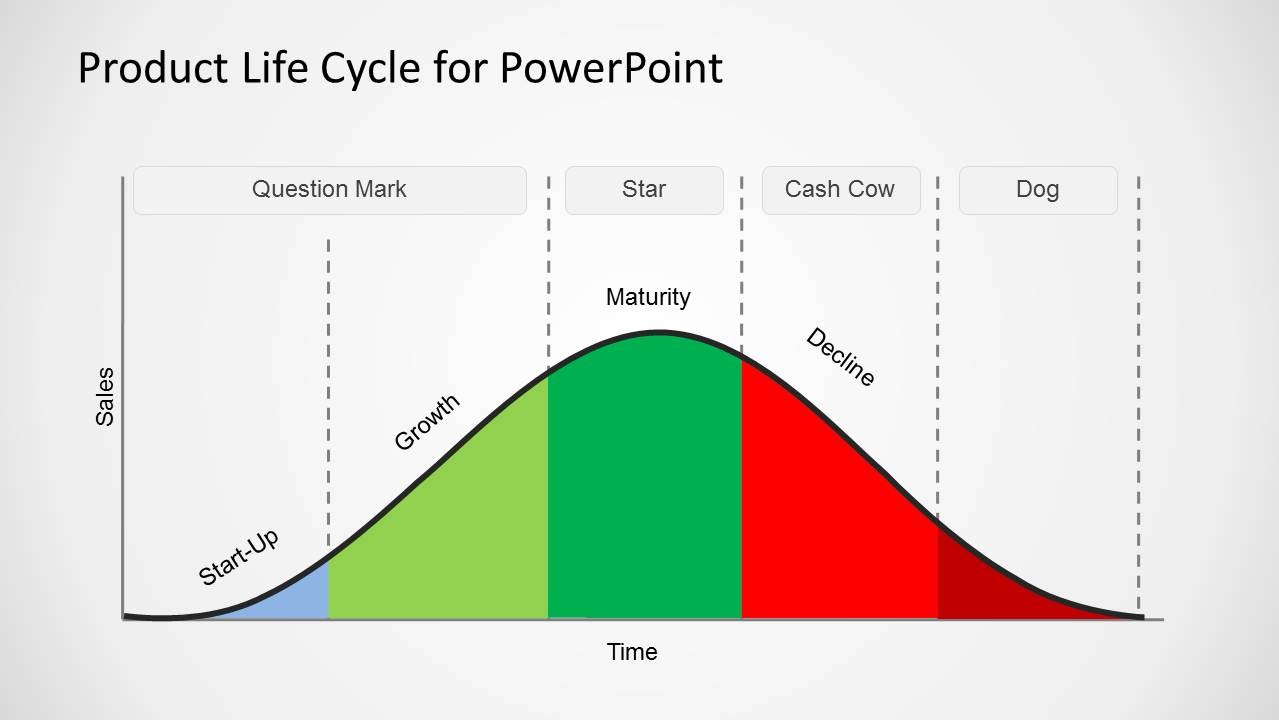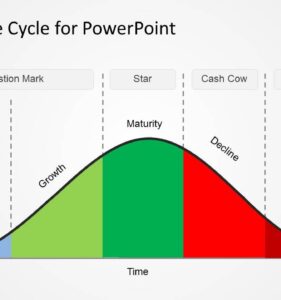In today’s fast-paced business landscape, staying competitive is a perpetual challenge. To navigate this complex terrain, companies must not only innovate but also understand the lifecycle of their products. The product lifecycle is a fundamental concept that plays a pivotal role in shaping strategies, making informed decisions, and ensuring a sustainable future for businesses. In this comprehensive exploration, we will delve into what the product lifecycle is and how it is intrinsically tied to the world of innovation.
Defining the Product Lifecycle
The product lifecycle is a strategic framework used by businesses to manage the various stages a product goes through, from its inception to its eventual retirement. This concept provides a roadmap that guides decision-makers in crafting effective strategies for each stage of a product’s existence. Typically, the product lifecycle consists of four main phases: introduction, growth, maturity, and decline.
1. Introduction
The first phase of the product lifecycle is the introduction stage. At this point, a new product enters the market, often with high development and marketing costs. Sales are typically low in the beginning, as consumers are unfamiliar with the product, and businesses must invest heavily in promotion and distribution to build awareness and generate interest.
Innovation is crucial during this phase, as companies must differentiate their product from competitors to capture the attention of potential customers. This differentiation can be achieved through unique features, cutting-edge technology, or innovative marketing strategies. The key here is to establish a solid foundation for the product’s journey through the lifecycle.
2. Growth
As a product gains acceptance in the market, it enters the growth phase. During this stage, sales begin to increase rapidly, and the product starts to generate profit. Consumer awareness is higher, and word-of-mouth referrals often contribute to this growth. Innovations in the growth phase focus on scaling production, optimizing distribution channels, and enhancing customer experience.
For instance, tech companies might release updated versions of their products with improved features and capabilities. These innovations not only attract new customers but also retain existing ones, fostering loyalty and sustainable growth.
3. Maturity
The maturity phase is marked by stable sales and a highly competitive market. Innovations at this stage often revolve around cost reduction, process optimization, and product diversification. Companies seek ways to maintain their market share by offering variations of the product, targeting new customer segments, or improving the product’s overall value proposition.
Innovation here may also involve extending the product’s lifecycle through creative marketing campaigns, partnerships, or rebranding efforts. The goal is to prolong the product’s viability as long as possible while maximizing profitability.
4. Decline
The decline phase is the final stage of the product lifecycle. Sales start to decline, primarily due to market saturation, evolving consumer preferences, or the introduction of superior alternatives. Innovations in this phase focus on managing the decline gracefully, which might include discontinuing the product, liquidating inventory, or repurposing the product for a niche market.
Understanding these four phases of the product lifecycle is essential for businesses seeking sustained success and profitability. However, the true power of this concept becomes evident when we explore its deep connection to innovation.
The Symbiotic Relationship Between Product Lifecycle and Innovation
Innovation and the product lifecycle share a symbiotic relationship that profoundly impacts a company’s ability to thrive in a competitive market. Let’s delve deeper into how these two concepts intertwine and influence each other.
1. Innovation Fuels Product Development
At the heart of the product lifecycle lies product development, the process of conceiving, designing, and creating a product. Innovation is the driving force behind this crucial phase. Companies must continuously innovate to create new products or improve existing ones, setting the stage for a successful product introduction.
Innovative ideas can originate from various sources, including customer feedback, market research, or the creative minds within the organization. These ideas then undergo rigorous testing, prototyping, and refinement, ultimately culminating in a product ready for market entry. Without innovation, product development becomes stagnant, and businesses struggle to bring compelling offerings to consumers.
2. Innovation Navigates Market Challenges
The product lifecycle is not a linear path; it’s riddled with challenges and uncertainties. Market dynamics can change rapidly, and consumer preferences are constantly evolving. This is where innovation becomes a compass, guiding businesses through the turbulent waters of the growth and maturity phases.
In the growth phase, companies must innovate to sustain momentum and fend off competitors. This may involve launching new marketing campaigns, expanding distribution channels, or enhancing customer support services. Without continuous innovation, a product’s growth can stagnate, and market share can dwindle.
Similarly, in the maturity phase, innovation is vital to prolong the product’s life. By introducing complementary products or services, exploring untapped market segments, or revamping the product’s design, companies can breathe new life into a mature product and delay its decline.
3. Innovation Drives Competitive Advantage
Innovation is the cornerstone of maintaining a competitive edge throughout the product lifecycle. In the introduction phase, being the first to market with a groundbreaking product can establish a dominant position. However, this advantage is often short-lived, as competitors quickly catch up.
To sustain competitiveness, companies must continually innovate, creating better features, improving quality, or offering unique customer experiences. Innovation keeps a product relevant, ensuring it meets or exceeds evolving customer expectations. This not only retains existing customers but also attracts new ones, reinforcing the product’s position in the market.
4. Innovation Shapes Exit Strategies
Even in the decline phase of a product’s lifecycle, innovation plays a crucial role. Companies must innovate to craft effective exit strategies. This might involve repurposing the product for a niche market, recycling its components, or transitioning customers to newer offerings. Without innovative thinking, the decline phase can lead to significant financial losses and damage to a company’s reputation.
In essence, innovation in exit strategies can minimize the negative impacts of a product’s decline on the overall business. It allows companies to extract value from their investments and resources, even as a product reaches the end of its lifecycle.
Innovation Strategies Across the Product Lifecycle
Understanding the relevance of innovation in the product lifecycle is one thing, but implementing effective strategies at each stage is another challenge. Let’s explore some innovation strategies tailored to each phase of the product lifecycle.
1. Introduction Phase
- Research and Development (R&D) Investment: Allocate resources to research and development to create a product that stands out in the market. Focus on technological advancements, unique features, and superior quality.
- Market Research: Gather valuable insights about customer needs and preferences to ensure that the product meets real market demands. This can help in fine-tuning the product’s design and features.
- Early Adoption Incentives: Encourage early adopters to try your product through special offers or exclusive access. This can generate initial buzz and drive early sales.
2. Growth Phase
- Scaling Production: Invest in efficient production processes to meet increasing demand while maintaining product quality. Consider automation and economies of scale to reduce costs.
- Product Line Extensions: Introduce variations of the product to appeal to different customer segments. These can include different sizes, colors, or feature sets.
- Partnerships and Alliances: Collaborate with other companies to expand your product’s reach. This can include co-marketing agreements or integration with complementary products or services.
3. Maturity Phase
- Cost Reduction: Continuously look for ways to reduce production costs without compromising quality. This can involve process optimization, sourcing efficiencies, or technology upgrades.
- Diversification: Explore new markets or customer segments that your product can serve. This might involve rebranding or repackaging to appeal to a broader audience.
- Customer Loyalty Programs: Reward existing customers for their loyalty with exclusive offers, discounts, or access to premium services.
4. Decline Phase
- Exit Strategy Planning: Develop a well-thought-out exit strategy that minimizes losses. Consider options like repurposing, recycling, or transitioning customers to newer products.
- Inventory Management: Efficiently manage remaining inventory to reduce carrying costs. Consider liquidation sales or donations to minimize financial impact.
- Customer Communication: Communicate transparently with loyal customers about the product’s discontinuation, providing alternatives or incentives to retain their business.
Challenges and Pitfalls of Product Lifecycle Management
While the product lifecycle provides a valuable framework for understanding a product’s journey, it’s not without its challenges and potential pitfalls. Here are some common issues that businesses may encounter:
1. Overlooking Innovation in Mature Products
One common mistake is assuming that innovation is only needed in the introduction and growth phases. Neglecting innovation in mature products can lead to stagnation and a faster decline. Companies must constantly seek ways to add value and differentiate their offerings.
2. Misjudging Market Dynamics
Market dynamics can change rapidly, and consumer preferences are often unpredictable. Businesses may misjudge these changes, leading to incorrect product development decisions. Regular market research and flexibility in strategy are crucial to adapt to shifting landscapes.
3. Ignoring Exit Strategies
Some companies may neglect planning for the decline phase, leading to significant losses. A lack of innovation in exit strategies can result in financial setbacks and damage to a company’s reputation. Proper planning is essential to navigate this phase effectively.
4. Underestimating Competitor Responses
Innovative products often attract competitors’ attention. Underestimating how competitors will respond to your innovations can lead to challenges in maintaining a competitive advantage. Companies must be prepared to adapt and evolve continually.
Conclusion
Innovation is not a one-time event but an ongoing process deeply intertwined with the product lifecycle. Understanding how innovation influences each phase of a product’s journey is crucial for businesses aiming to thrive in today’s dynamic and competitive markets.
By recognizing the symbiotic relationship between innovation and the product lifecycle, companies can craft effective strategies that harness the power of innovation to drive product development, navigate market challenges, maintain a competitive edge, and shape successful exit strategies. With innovation as a guiding force, businesses can achieve sustainable growth, maximize profitability, and secure a prosperous future in an ever-changing business landscape.


